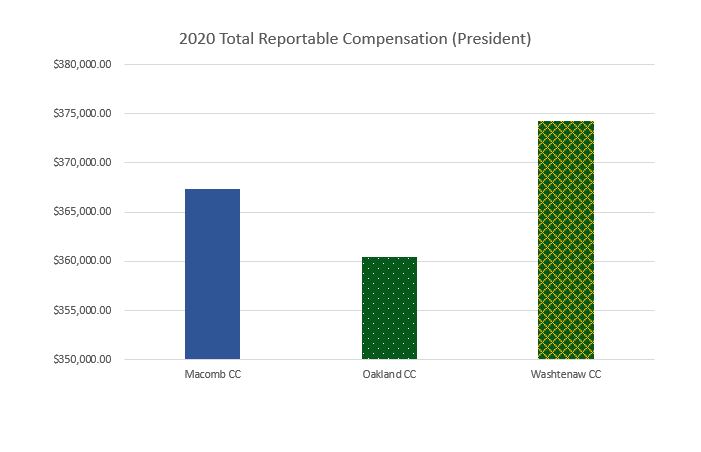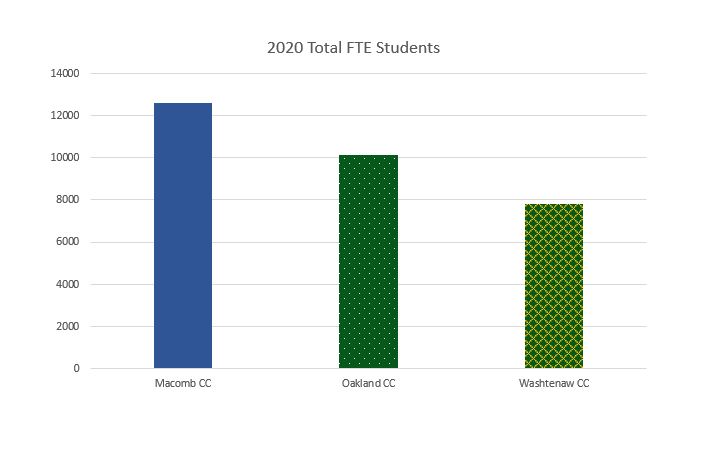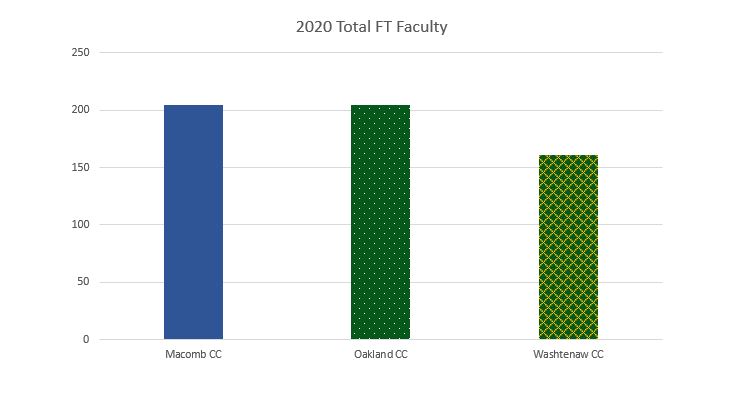For the last couple of days, I have written about measures that can help determine the efficiency of a higher education institution. The measures are based on commonly available data. By themselves, the measures may create a picture of an institution. The real value is in comparing similar institutions. In doing this, you can get a better picture of how institutions stack up to one another.
So, I decided to compare WCC’s measures to those of Macomb Community College (MCC) and Oakland Community College (OCC). Macomb Community College is the largest community college in the State of Michigan in terms of enrollment. It is easy for a large institution to become inefficient, so I wanted to see how MCC and WCC stack up against each other in that regard. Oakland Community College has five campuses under one president, so it has a lot of moving parts. Wayne County Community College District has six campus locations, but its executive structure makes it harder to compare. (Each campus has its own president.)
Higher education and executive compensation
I did not get far in the comparison. Here is why.
The first two measures compare the president’s total compensation to the number of full-time-equivalent (FTE) students and to the number of full-time faculty members. To find the total compensation for each institution, I looked up the Form 990 for each institution’s foundation. The 990 form requires the institution to report the compensation of the related institution’s highest-paid employee. In the case of a higher education institution, that is typically the president.
For the year ending June 30, 2020, the total compensation for the presidents of the three institutions looks like this.

You will notice that Washtenaw Community College’s president receives a higher total compensation than either the president of the largest community college in Michigan, or the president of a five-campus community college.
Evaluating an institution by FTE Students
The first measure compares the institution president’s total compensation to the number of FTE students. For the year ending June 30, 2020, the total number of FTE students at MCC, OCC and WCC looked like this:

You will notice that WCC had significantly fewer FTE students than either MCC or OCC.
By itself, this is a problem. WCC is not so large or so complex that the compensation of the president should exceed those of the largest community colleges in Michigan.
Evaluating a higher education institution by full-time faculty
The second measure compares the institution president’s salary to the number of full-time faculty members. In this regard, this is how MCC, OCC and WCC compared in 2020, the last year for which these data are available for all three institutions.

Again, you will see that WCC has fewer full-time faculty than either MCC or OCC.
So, remind me: why are we paying a premium for a higher education executive when WCC is objectively the smallest and simplest of these three community colleges? At what point does the Board of Trustees start tying executive compensation to reasonable performance standards? (Like, I don’t know – increasing enrollment, maybe?) As a community, Washtenaw County taxpayers deserve far better than we are currently getting from our elected officials.
Photo Credit: Ervins Strauhmanis , via Flickr






























